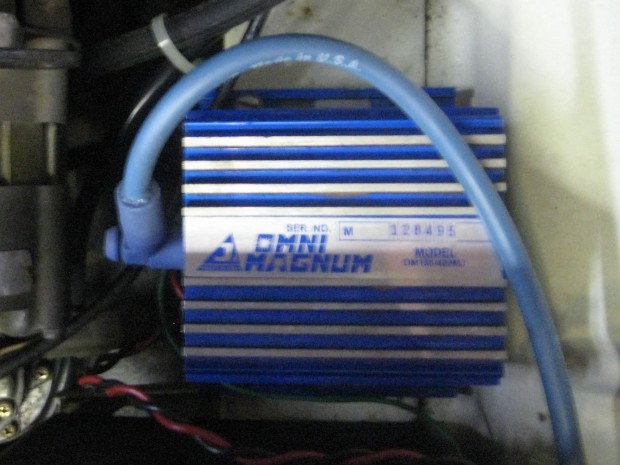It’s somewhat of a tradition for me, while the everyone else is watching the Super Bowl I like to take a drive. It’s like starring in The Omega Man – no one on the streets, no traffic, and usually, no mutants.
This Sunday was also a test run. I recently dug out a vintage Jacobs Omni Magnum electronic ignition system from its resting place and installed it in Scraps. Charlton Heston drove around with a Smith and Wesson M76 Sub Machine Gun – a Jacobs Omni Magnum would have to do for me.
The car already had the points replaced with a Pertronics system which allows the ballast resistor to be removed, so the plugs were already getting a more powerful spark from the coil. I’m still fiddling with the fine tuning of the Mikuni carbs, as the idle is a bit rough. Overall the engine was running pretty well, but there was a bit of fuel smell – not all of the gas that was going into the cylinders was being burned – some found its way out the tailpipe.
In the past, I’ve upgraded other roadsters with an Electronic Ignition conversion known as the Boone Dizzy – a Nissan 210 “match box” distributor modified to fit the R16 and U20 motors. Usually the upgrade tames rough idles and smoothes out running at all engine speeds. All-in-all one of the best things you can do to improve the everyday drivability of a roadster.
Bill Cole recently posted on 311s.org about how happy he was with upgrading his ignition to an MSD 6a system on his 1970 2000. It reminded me that I had removed a Jacobs box from Zippy when I first got the car. This was quite the magic box in the 80’s and I figured I might as well see if it worked.
Installation was really easy, the PO had done me a solid by putting all of the instructions into a folder and including it with all of the extra goodies. There were two little holes already drilled just in front of the battery that fit the bright blue anodized control box perfectly – almost like one was installed before.
The new system uses the old system as a trigger, and the “ultra-high energy performance/mileage ignition systems computer” is also connected directly to the battery. While the new high-energy “coil” gives a more powerful spark, the “magic” is that the new system tests the spark many times during each firing and adjusts the spark on the fly. The idea is to eliminate misfires. I’m reading Dr. Jacobs’ book about ignition systems right now and he’s big on efficiency with increased power being a side benefit.
So how does it work? Pretty well, though the idle is still rough. It’s hard to describe actually, because it is not a night and day difference. On my daylight zombie run up across the St Johns bridge, up Germantown to Skyline to Cornelius Pass and back home, the engine was eager to rev. It seems like it is happy with the thicker spark – it just feels stronger. There is no stumbling on acceleration and the occasional “sneeze” through the carbs that I had experienced before is totally gone. The total lack of gasoline smell tells me that there is definitely more complete combustion happening.
I’ve opened up the gap on the spark plugs from .030″ to .045″ in accordance with the instructions – I think I can go to .050″ with no problem. That’s going from less than a third to half of what the Doctor calls the magic spark plug gap of .10″ – the ideal spark width for complete combustion.
A fresh set of plugs, gapped to .050″ is the next step and then some hard driving is called for – so that I can move on to the black art of spark plug reading…






